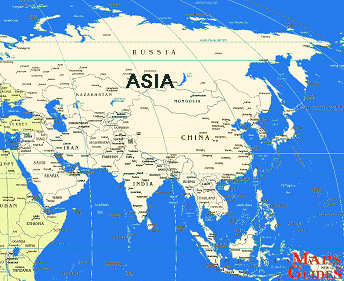Asia is the world's largest and most populous continent. It covers 8.6% of the Earth's total surface area (or 29.4% of its land area) and, with over 4 billion people, it contains more than 60% of the world's current human population. Chiefly in the eastern and northern hemispheres, Asia is traditionally defined as part of the landmass of Eurasia—with the western portion of the latter occupied by Europe—lying east of the Suez Canal, east of the Ural Mountains, and south of the Caucasus Mountains and the Caspian and Black Seas. It is bounded on the east by the Pacific Ocean, on the south by the Indian Ocean, and on the north by the Arctic Ocean. Given its size and diversity, Asia—a toponym dating back to classical antiquity—is more a cultural concept incorporating a number of regions and peoples than a homogeneous physical entity. The history of Asia can be seen as the distinct histories of several peripheral coastal regions: East Asia, South Asia, and the Middle East, linked by the interior mass of the Central Asian steppes. The coastal periphery was home to some of the world's earliest known civilizations, each of them developing around fertile river valleys. The civilizations in Mesopotamia, the Indus Valley, and the Huanghe shared many similarities. These civilizations may well have exchanged technologies and ideas such as mathematics and the wheel. Other innovations, such as writing, seem to have been developed individually in each area. Cities, states, and empires developed in these lowlands.
WikipediaIf it is available then we publish here information about the territory from CIA factbook. For Asia it is not available.
CIA The World Factbook 




